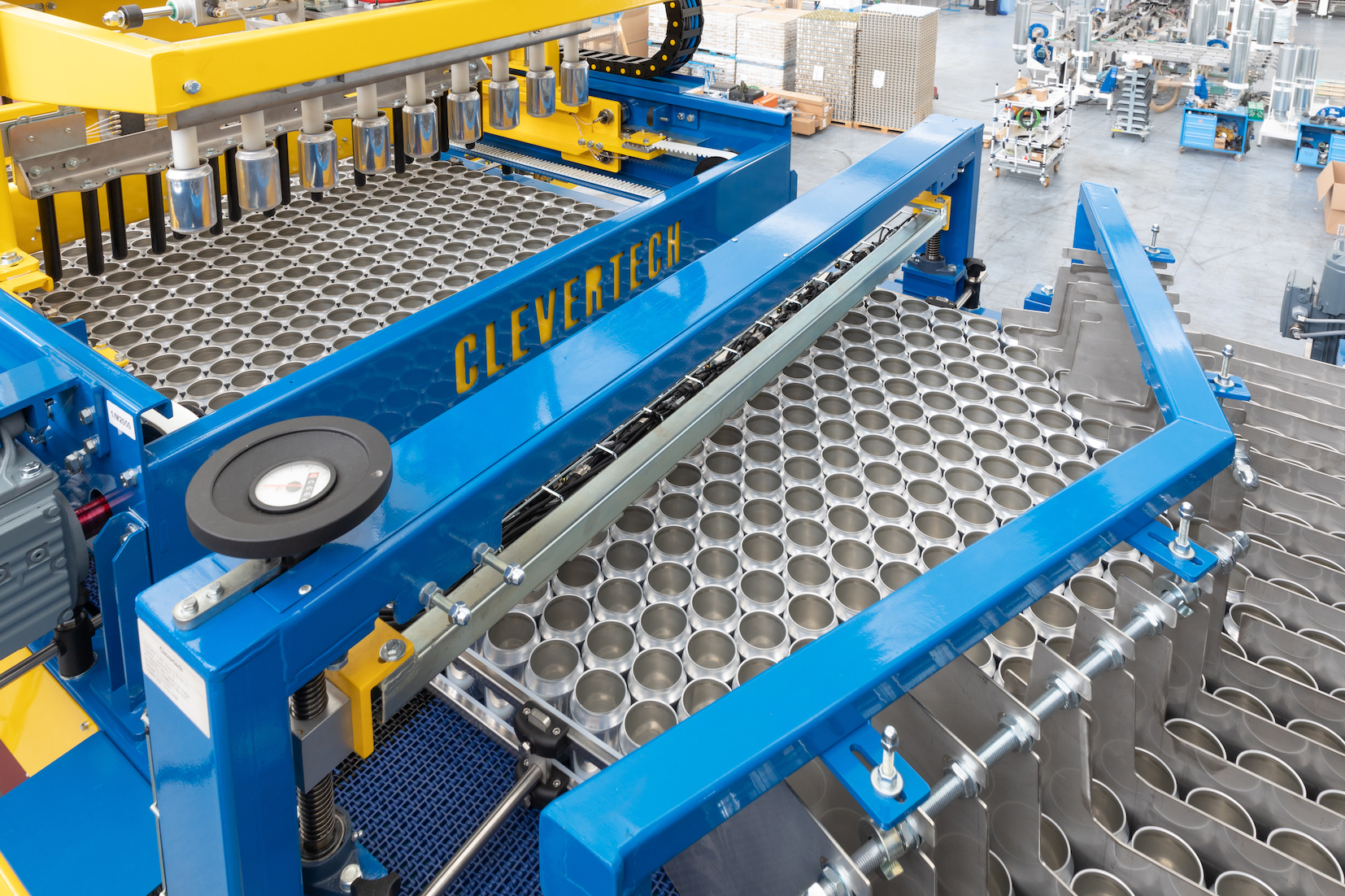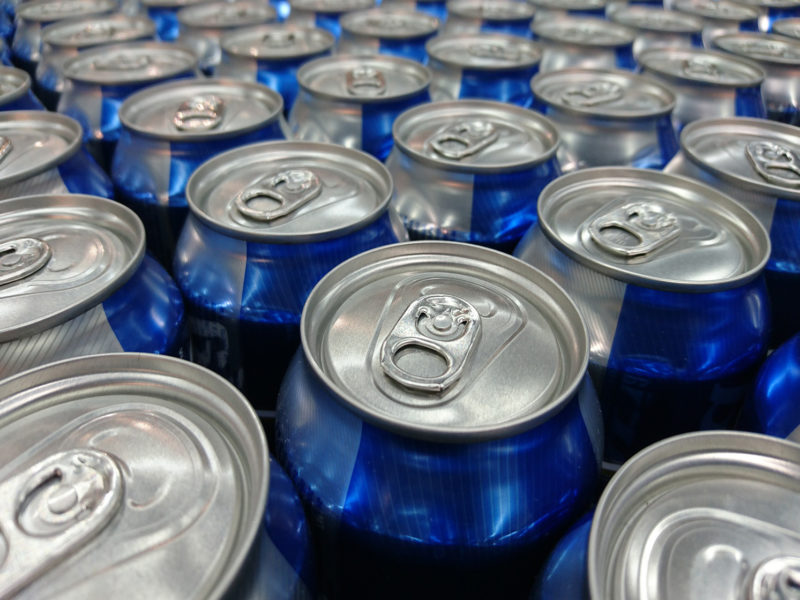
Clevertech, Expert in Can&Ends
Product packs can be made using many different materials: cardboard, plastic, aluminium or tinplate.
Eco-friendly and functional, cans were the packaging superstars in the past and today, they are increasingly stepping back into this role.
Heritage:
The first aluminium can appeared in the market in 1958 and went on to become the top packaging solution because of the material’s benefits, such as being practical, hygienic and light.
Cans may be composed of two or three pieces and made of aluminium or tinplate. They are commonly composed of only two pieces: the cylindrical body and bottom, obtained through a special process that gives them a convex shape; and the lid, which is stamped.
Cans, however, are continually changing in shape but the ultimate goal is that of finding the right compromise between space savings and ergonomic benefit.
The latest “sleek” can was introduced in 2009. Tall, slim and elegant, with clean lines, it is a balance of functionality and aesthetics. This design change has brought considerable advantages in the form of raw material savings, reduced weight and significant logistics improvements.
Because of constant innovations in the metal casting and lamination processes and in the manufacturing automation systems, great improvements have been achieved, including thinner sheets and more sophisticated and targeted production processes.

Sustainability:
According to data published by APEAL, the association of European producers of steel for packaging, the recycling rate of steel packaging in Europe has reached a record 85.5%, growing by 1.5% over the previous year. The trend has been on the rise in the last 10 years.
The association of European metal packaging producers, Metal Packaging Europe, has defined a new Life Cycle Assessment (LCA) of metal cans used for beverages, foods, aerosols, and other applications.
The LCA traces the path from extraction of the raw material through to the end of the line. It was observed that over the years, greenhouse gas emissions have fallen considerably thanks to these factors:
- Material sourcing and can creation process improvements;
- Lower can weight: 2% less for beverage cans and 1% less for food cans;
- Increase in the percentage of materials – aluminium or steel – that can be recycled, reaching up to 84%.
This has brought undeniable benefits to the environment, reducing the impact on climate change by 50%.
The reusability of metal packaging makes it suitable for the circular economy. Both aluminium and steel are “permanent” materials that can be recycled an infinite number of times without losing their characteristics. This means the material can be kept within the economy and no additional raw materials need to be used.
The excellent results obtained are due to the eco-friendly characteristics of steel and all the components in the value chain.
This defines a cycle of use of steel products: they are created, they are used, and then they are recycled.
We can’t say the same for plastic products. According to the OECD, most plastic products are burned or dumped in the environment. It is estimated, in fact, that only between 14% and 18% of collected plastic is recycled. And the circularity rate is low even for PET polyethylene terephthalate, the most recyclable and recycled plastic. This has forced the European Union to introduce a new regulation establishing that by 2025, beverage containers must contain 25% recycled material.
Trend:
The future of the can is looking bright. The packaging can be adapted to a large variety of products, including foods and beverages typically packaged in glass containers. According to NIELSEN, the global data and analytics leader, the latest trend in the U.S. market is canned wine: in 2021, sales increased by 62% over the previous year. The idea is innovative and can appeal to a young and dynamic audience. Thanks to the use of this packaging, the ready-to-drink arena is coming alive and expanding within the drinks and spirits world, traditionally associated with glass.
That’s because aluminium is very stable in contact with food and suitable to preserve all kinds of beverages, whether alcoholic or not, maintaining the temperature of the materials.
Pros:
Cans are made from a flexible, resistant and lightweight material that makes them easy to transport, plus the risk of product waste from packaging breakage is limited. This is why cans can be used in every distribution channel, from big retail to e-commerce. In addition, the long shelf life ensured by the better protection cans provide, optimises resources and logistics.
The benefits of this packaging are countless: durable, malleable and impact resistant.
The packaging delivers multiple performance characteristics and advantages:
- The canned product maintains its organoleptic characteristics intact thanks to the packaging’s ability to block out oxygen, humidity, light, micro-organisms and odours.
- Being lightweight, cans can be distributed in short time frames, which in turn avoids long storage periods and alteration of the product.
- Their excellent thermal conductivity allows for more efficient energy use during refrigeration.
- Aluminium packaged products are easily transported.
Solutions powered by Clevertech:
It is clear from this analysis of the market and its trends that engineering innovations and the increase of automation are crucial to support the new demands.
First, let’s look at the numbers: Clevertech can deliver systems that can handle and palletise up to 3,600 empty cans per minute.
The major reasons behind this efficiency are compact footprints, reliable performance and innovation. What’s more, Clevertech’s integrated solutions can meet any requirement thanks to their holistic design. The design adopted for product manipulation enables to maintain the quality of the cans intact.
Clevertech systems cover every production stage of the packaging line: loose product palletisers, depalletisers, dynamic balancers, empty container conveyors, both mechanical and magnetic. Our approach is to supply a complete end-of-line solution, with palletisation and film wrapping or strapping.
In the last few years, Clevertech has successfully installed and commissioned many solutions for big multinationals and global leaders in the food industry. We have a large number of machines with the ability to adapt to the customer’s specific circumstances: can palletisers that can reach production speeds unmatched by any other and fully and safely integrated end-of-line solutions with conveyors, palletisers and strappers.
In addition, Clevertech solutions allow for very quick changeovers: the machine can switch from 49mm to 153mm container diameters in a matter of minutes.
All the units are designed to operate autonomously with no human intervention.
Innovations in the packaging process have led Clevertech to lead the food market even for the countless packaging solutions it has developed in response to new demands in the fields of E-Commerce and Ready-to-Display products.

Conclusions:
Environmental issues are rising on the agenda so serving the needs of the sector and increasing the use of sustainable packaging, are becoming crucial.
The aluminium can is an iconic object that can accommodate the advancements that have been made in design and technology. Aluminium is a unique packaging material: efficient, versatile and safe, it combines outstanding performance capabilities with respect for the environment.
In alignment with the new demands of the market, Clevertech has designed and developed a specific portfolio of solutions for the handling and storage of reusable packs that adapts to its customers’ diverse needs.



